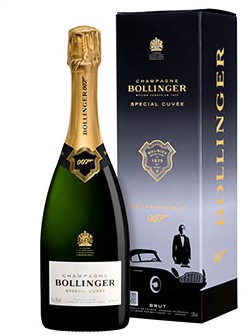
Are you planning an event in the Cayman Islands and need to buy the best champagne available? If so, Jacques Scott Wines & Spirits provides the widest number of brands available as well as all wines, spirits, and beers you might need.
 For a well-stocked bar, come to Jacques Scott Wines & Spirits either online or in-person. Online orders are paired with free delivery to any destination on Grand Cayman, and we have no fewer than six separate liquor store locations. Convenience, quality, and choice are the hallmarks of Jacques Scott Wines & Spirits.
For a well-stocked bar, come to Jacques Scott Wines & Spirits either online or in-person. Online orders are paired with free delivery to any destination on Grand Cayman, and we have no fewer than six separate liquor store locations. Convenience, quality, and choice are the hallmarks of Jacques Scott Wines & Spirits.
Prepare Yourself for Champagne Browsing
The language surrounding champagne is unique, specific, and important to understand when choosing champagnes. Read on for a general primer in the vocabulary of bubbly.
- AOC “appellation d’origine contrôlée” is a decree from officials in France indicating the region of production. Not only does this documentation indicate location, but it also suggests a degree of tradition and knowledge. For Champagne, it’s important to understand that a designation of Champagne, as opposed to sparkling wine, production must be from Chardonnay, Pinot Noir, and Pinot Meunier grapes grown in the Chardonnay region of France. (Champagnes could include blends of four other grape varieties grown in the region: Arbanne, Petit Meslier, Pinot Blanc, and Pinot Gris “Fromenteau”. These four grapes must be from existing plantings.)
- Assemblage – refers to the blend of base wines (vin clair) or grapes to compose different varieties of champagnes.
- Base Wines – also referred to as still wine or vin clair, these wines have completed primary fermentation and once blended and bottled, will begin a secondary fermentation.
- Blanc de Blancs – composed entirely from white grapes with white juice, usually Chardonnay.
- Blanc de Noirs – composed entirely from black grapes with white juice, a blend of Pinot Noir and Pinot Meunier.
- Brut – a champagne with an added dosage of 0-12 grams/liter. The dosage itself is a mix of reserve wine and pure cane sugar. An Extra-Brut champagne has less than 6 grams/liter. Blended champagnes are often referred to as Brut d’assemblage; a champagne with no dosage is Brut Nature (Non-dosé, Brut Zéro or Zéro dosage); and Brut Sans Année (BSA) is a non-vintage (entry level) Brut champagne.
- Cuvée – for Champagne, the cuvée is the first 2,050 liters of a 4,000 kg press, and the next 500 liters are the taille.
- Demi-Sec – refers to a fairly sweet champagne with a dosage of 32-50 grams/liter.
- Doux – refers to the sweetest type of champagne with a dosage greater than 50 grams/liter.
- Méthode Champenoise – the traditional method for creating Champagne; the term Méthode Traditionelle can be used in place of it for sparkling wines, or champagnes made outside of the Champagne region.
- Millésime (Vintage) – made during a single year; the opposite is a non vintage champagne.
- Perpetual Blend – storing reserve wines in one blend, replenished following the yearly process for every increasing complexity of the reserve.
- Prise de mousse – refers to the secondary fermentation that converts the blended wines into a sparkling wine. This process takes place within the bottle.
- Sec – dosage of 17-32 grams/liter of sugar.
Now that you’re familiar with the broad terms involved with the creation, sweetness, and composition of champagnes, you’ll be prepared to choose the best for you to buy from Jacques Scott Wines & Spirits, the premier
